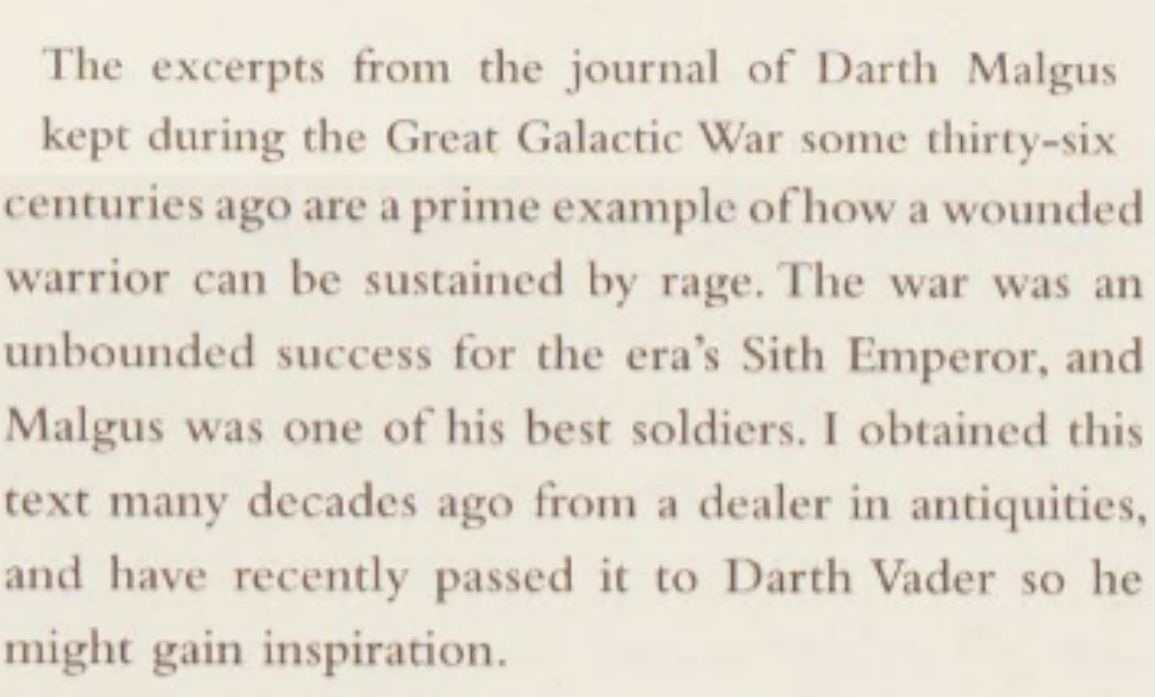When we talk about Emperor Palpatine, we usually focus on how many people he manipulated, defeated, or outwitted. But what if I told you there was actually a Sith Lord he admired? Not feared. Not used. Genuinely respected.
This wasn’t some ancient myth or distant warlord, this was someone whose tactics, strength, and mindset left a deep impression on the man who became the galaxy’s ultimate puppet master. His name was Darth Malgus, and his legacy helped shape the dark side philosophy that Palpatine, and even Darth Vader, would follow for years to come.
Darth Malgus
One of the few Sith Lords Palpatine actually admired was Darth Malgus, a powerhouse from the Old Republic era.
Born as Veradun, Malgus wasn’t just strong—he was brutally effective. His rise through the Sith ranks came fast thanks to a lethal mix of strength, strategy, and sheer ambition. He recaptured the ancient Sith world of Korriban and led the infamous assault on the Jedi Temple during the Sacking of Coruscant—two of the boldest moves in Sith history.
But those accomplishments weren’t the only reason Palpatine took notice. What really earned Malgus a spot in the Emperor’s personal archives were the traits he embodied—traits that mirrored Palpatine’s own vision of Sith supremacy.
Unyielding Ambition

Darth Malgus was defined by his unshakable ambition. He had one goal—power—and nothing was ever off-limits in pursuit of it. That ruthless drive mirrored the very traits Palpatine valued most.
But Malgus wasn’t just a war machine. During the early days of his rise, he met a Rutian Twi’lek slave named Eleena Daru on Geonosis. After killing her master, he took her in—not as another tool of war, but as a companion. Their bond grew over time, and Eleena fought alongside Malgus in key battles throughout the Great Galactic War. She wasn’t just someone he loved—she was his trusted partner on the battlefield.
Still, even love couldn’t survive Malgus’s commitment to strength. During the Sacking of Coruscant, Eleena was injured, and Malgus saw it as a moment of harsh truth: his feelings for her were a liability. In classic Sith fashion, he acted without hesitation, driving his lightsaber through her heart. In his mind, it was the only way to become truly untouchable.
Strategic Brilliance Valued by Palpatine
One of the clearest displays of Malgus’s strategic brilliance was the infamous Sacking of Coruscant in 3653 BBY. The Sith Empire staged peace negotiations as a distraction—then launched a full-scale surprise assault on the Republic capital. Malgus wasn’t just involved—he was the spearhead. He led the team that stormed the Jedi Temple, cutting down defenders and sending a message that shook the galaxy.
It wasn’t just brute force. This was psychological warfare at its finest—planned, timed, and executed with terrifying precision.
And it wasn’t a one-time show of skill. Earlier in the war, Malgus had already helped reclaim Korriban, the ancient Sith homeworld. Fighting alongside his master, Darth Vindican, he led the charge that drove Republic forces off the sacred planet. These weren’t just battles—they were calculated power plays that cemented Malgus as one of the Sith’s most effective tacticians.
How Darth Malgus’s Legacy Influenced Palpatine’s Vision for the Sith
Darth Malgus didn’t just carve his name into Sith history through conquest—he left behind a legacy so intense that even future Sith Lords couldn’t ignore it. His actions were so impactful that Darth Bane, the creator of the Rule of Two, referenced Malgus’s rise in his teachings centuries later. That alone shows just how deep Malgus’s influence ran.
Much later, Darth Sidious—always a student of Sith history—managed to acquire what little remained of Malgus’s personal writings. Through an antiquities dealer, he recovered fragments of the ancient Sith Lord’s journals, which he would later compile into the Book of Sith, a collection of dark side knowledge passed down through generations.
Sidious didn’t just keep these writings to himself. Seeing a reflection of Malgus’s strength, vision, and ruthless ambition, he chose to pass the story on to his apprentice, Darth Vader. It wasn’t just history—it was a lesson. A reminder of what raw power looked like when unburdened by weakness or sentiment.

Vader, already feeling like a twisted echo of the past, found himself relating to Malgus more than he expected. Like Malgus, he was torn apart and rebuilt. Like Malgus, he served a master but dreamed of something more. The journals became a mirror—reflecting both warning and inspiration.
Through Malgus, Sidious shaped Vader’s mindset, showing him a version of strength that defied Jedi teachings and even Sith tradition. Malgus became more than a name—he became a symbol of what a Sith could truly become when there was nothing left to lose, and everything to take.

